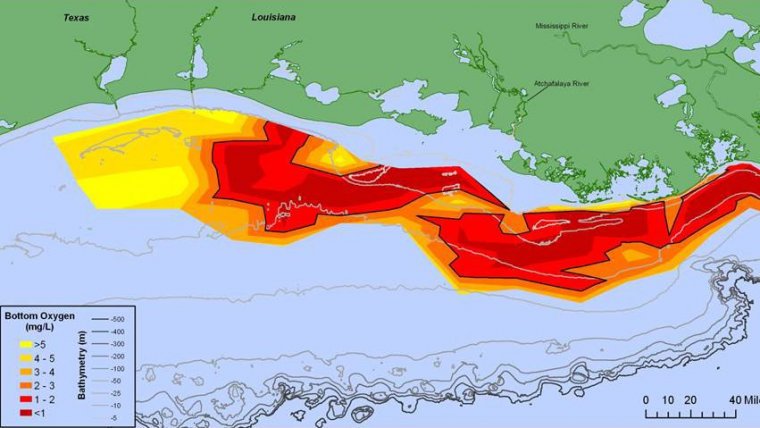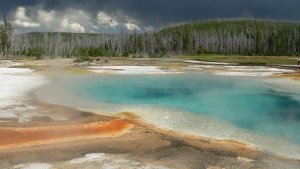| News / Science News |
2015 Gulf of Mexico dead zone ‘above average’
NOAA | SEPTEMBER 26, 2015
Scientists have found this year’s Gulf of Mexico dead zone — an area of low to no oxygen that can kill fish and marine life — is, at 6,474 square miles, above average in size and larger than forecast by NOAA in June. The larger than expected forecast was caused by heavy June rains throughout the Mississippi River watershed.

Map showeing distribution of bottom-water dissolved oxygen from July 28 to August 3. ![]()
The measured size this year is larger than the 5,052 square miles measured last year, indicating that nutrients from the Mississippi River watershed are continuing to affect the nation’s coastal resources and habitats in the Gulf.
“Dead zones,” also called hypoxia areas, are caused by nutrient runoff from agricultural and other human activities in the watershed and are highly affected by river discharge and nitrogen loads. These nutrients stimulate an overgrowth of algae that sinks, decomposes, and consumes the oxygen needed to support life in the Gulf.
Dead zones are a major water quality issue with an estimated total of more than 550 occurring annually worldwide. The Gulf of Mexico dead zone is the second largest human-caused hypoxic area in the world.
YOU MAY ALSO LIKE





